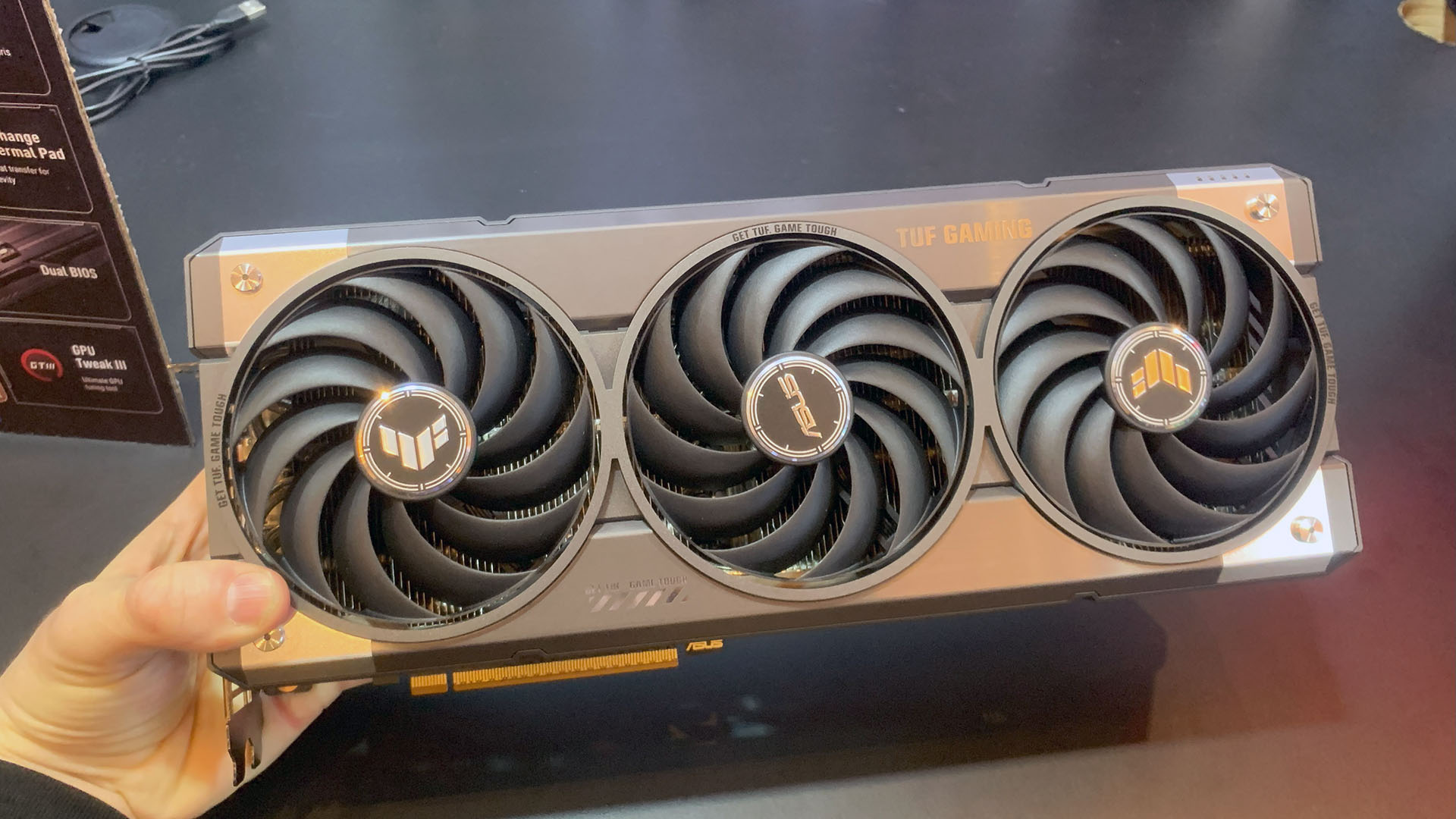AMD’s new Radeon gaming GPUs barely had a mention in the company’s recent announcement at CES, but I’ve spotted a load of new AMD Radeon RX 9070 XT and 9070 graphics cards on the CES show floor, not only from board partners such as Asus and Gigabyte, but also AMD reference models. AMD might be playing down its new GPUs, but the cards definitely do exist, so let’s take a look at them.
There’s little doubt that the new Nvidia GeForce RTX 5090 is going to take the best graphics card crown when it comes out at the end of January, but we were hoping that the new AMD GPUs would at least take on the RTX 5070 with some competitive pricing. While there’s no release date or price for the Radeon RX 9070 XT yet, though, we can at least take a look at the cards.
Let’s start with this massive Asus TUF card, which sports three 8-pin PCIe power connectors on the top edge, suggesting it’s an overclocked model. There’s a substantial three-fan cooler on this card, but if you peek under the backplate you find that the PCB is very small.
The Radeon RX 9070 XT may only be a mid-range GPU by all reports, but companies such as Asus are still looking to get the most out of it with hefty coolers and extra power.
Asus didn’t have any details about the GPU itself on display, but it did reveal that this Asus TUF Gaming Radeon RX 9070 XT card will have a dual BIOS system, as well as a phase-change thermal pad between the GPU and the cooler’s contact plate. Interestingly, Asus also recommends an 850W PSU for this card, suggesting that AMD’s new GPUs draw a fair amount of power, despite their mid-range positioning.
Likewise, this PowerColor Radeon RX 9070 graphics card is based on the cheaper, non-XT model, but it still has a big three-fan cooler and some large heatsinks, with this chunky card pushing well past the two-slot form factor.
Meanwhile, Gigabyte had both a Radeon RX 9070 and a 9070 XT card on display on the CES show floor. The top model is the new Gigabyte Aorus Radeon RX 9070 XT Elite, which it says features RGB lighting on the metal backplate.
Like the Asus TUF card, this Gigabyte model also has a dual BIOS system for performance and quiet modes, and a vapor chamber with composite copper heatpipes. This card is joined by a Gigabyte Radeon RX 9070 Gaming OC graphics card below it, which overclocks the RX 9070 and also has a dual BIOS system.
Finally, we also stopped by to see AMD at CES, and the company had several gaming rigs set up with engineering samples of the new graphics cards. Frustratingly, they were all behind reflective glass panels that we weren’t allowed to remove, but you can get an idea of the designs of the reference cards here.
You can see that the reference spec only requires two 8-pin PCIe power connectors, compared to three on the Asus card, and there’s a serious cooling system comprising copper heatpipes and large heatsinks. Moving the camera below the card on another machine shows that it’s equipped with three fans, if you can look past the reflective glass.
AMD also had some demos running on these machines, but there was no indication of performance. It looks as though the company is planning to keep the details of these new GPUs under wraps for a little while longer, possibly while it works out pricing now that Nvidia has revealed the RTX 5070 price.
There were a few other RDNA 4 graphics cards on display at AMD’s suite too, including a white Sapphire Pure model, as well as both black and white XFX cards.
While we’re waiting for more detail about AMD’s next-gen GPUs, it’s been good to actually see some of the cards in the flesh – they definitely do exist. While we wait for AMD to tell us more, check out our guide to the RTX 5080 to see what the competition is going to release later this month.









